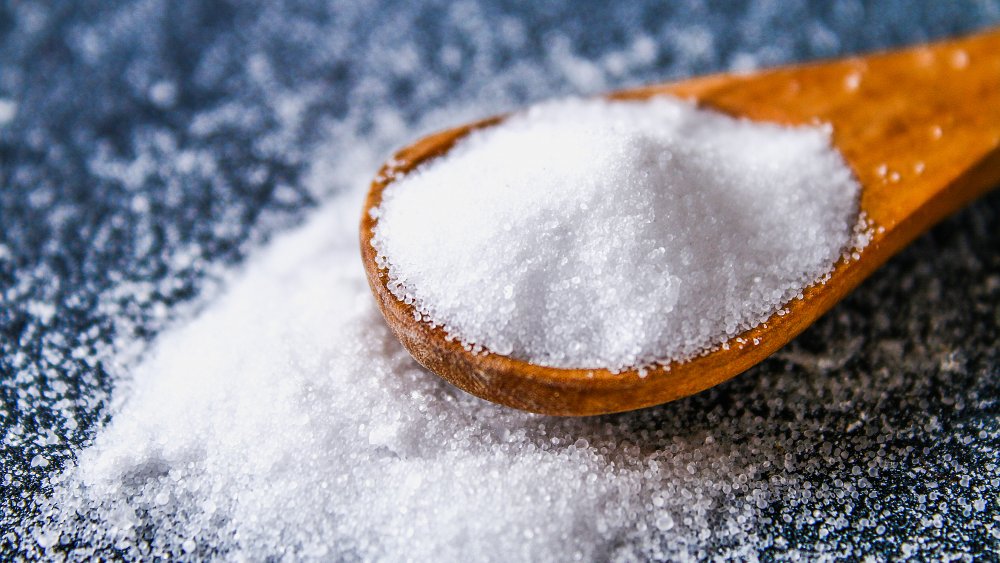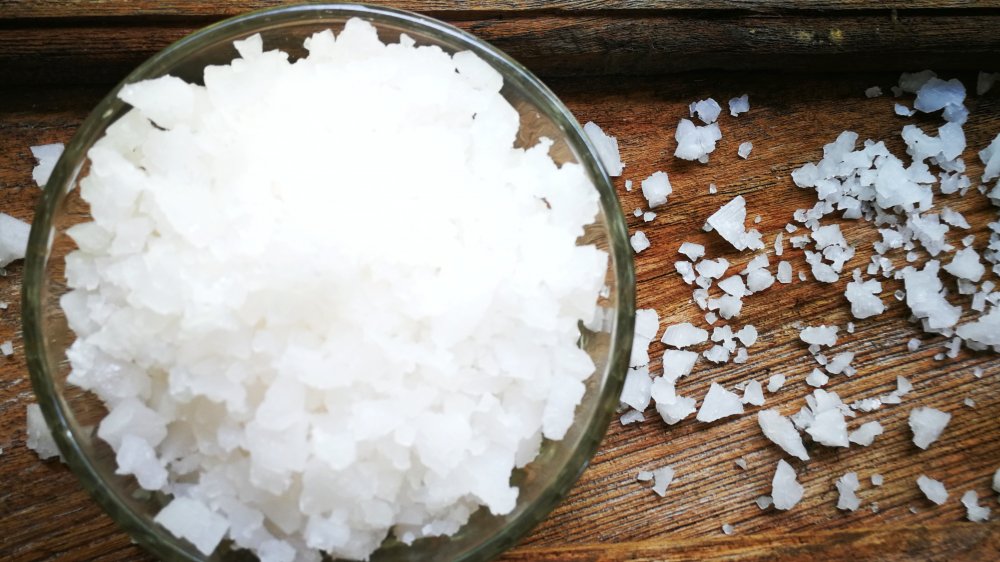The Real Difference Between Kosher Salt And Table Salt
Look at a supermarket's salt section today, and the choices can become overwhelming — kosher, sea, pink Himalayan, iodized table salt, and even gourmet flavored varieties. Let's help clear up at least part of the confusion by comparing kosher salt and table salt.
In essence, when it comes to salt, size matters, and the grain sizes of these two salts are a major difference. According to The Spruce Eats, table salt is finely ground, so it dissolves easily — but it packs less flavor than kosher salt, which has a coarser texture, with large and unevenly-shaped crystals that offer a punchier taste.
The grain size can make such a significant impact because many home cooks (and many recipes) measure by volume, not weight. Therefore, 1/4 cup of kosher table salt equates to 39 grams, while the same amount of table salt is 76 grams, which is almost double — and that disparity is bound to send your dish into the salt-overload stratosphere (via Food Network).
Using and measuring kosher and table salts
According to Bon Appétit, kosher salt receives its name from its usefulness in the koshering process, which requires extracting moisture from meat (via Kosher.com). As explained in Cook's Illustrated, it's likewise ideal for removing moisture from vegetables, such as eggplant or cucumbers.
Table salt, also true to its name, is great for seasoning foods at the table or adding to pasta water or soups, but it may contain added ingredients, like calcium silicate, to prevent its small grains from sticking together (via Tasting Table). On the other hand, HuffPost reports that kosher salt tends to be additive-free (though brands' ingredients vary). And, unlike iodized table salt, kosher salt does not contain iodine, which many experts believe gives the latter an edge in flavor.
When cooking, kosher and table salt should not necessarily be used interchangeably. The Spruce Eats offers a handy conversion chart, but again, (serving) size matters: At smaller measurements, it may be okay to use the same amount, but for a teaspoon or more, you probably need to add more kosher salt than you would table salt.
Confusing things further, Cook's Illustrated points out that not all kosher salts are created equal — while one brand may require tacking on an extra half-teaspoon when replacing a teaspoon of table salt, another brand can require doubling, to two teaspoons. (Some brands, like Morton Salt, also offer a conversion chart.) Any cook worth their, well, salt will be wise to measure mindfully.

